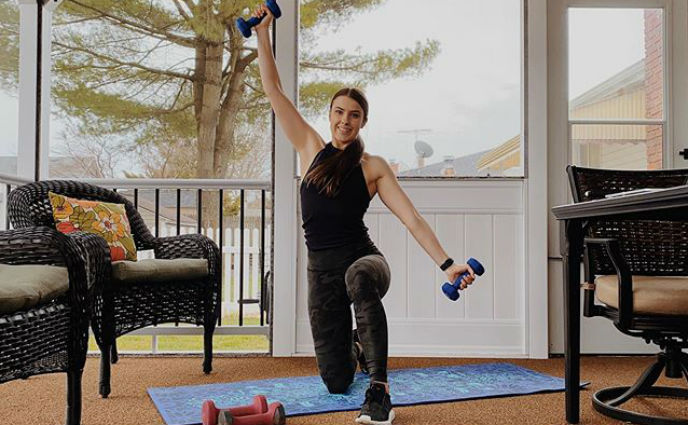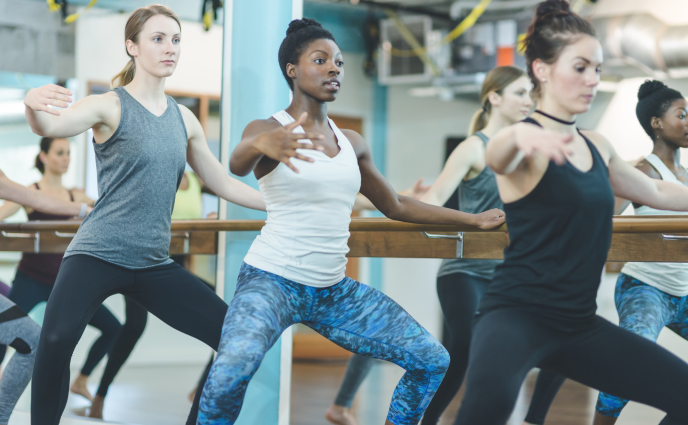"Stress is basically feeling fear and being overloaded or overwhelmed in any given experience... When we're overwhelmed and stressed out, this is where we'll feel it," says Cardino.
Add that stress to long hours at our desks, behind steering wheels, or looking down at phones, our head, neck and core muscles undergo a lot of strain, often leaving them quite overworked by the end of the day.
Image via PeopleImages/E+/Getty
Cardino has a few suggestions to help with your alignment:
1. Hold your phone more directly in front of your face when you scroll.
2. Set your computer screen up at eye-level by adjusting your seat height and/or stacking books under your monitor.
3. If you're using a laptop for long stretches of time, get a wireless keyboard and mouse so you can raise your laptop and set it up a little farther from your face while you type (this has the added benefit of being a more flattering set-up for Zoom meetings).
Image via alvarez/E+/Getty
For her part, Hardy also has the following tips:
1. Take mini pause-and-stretch breaks throughout the work day. Even a couple minutes can be very effective!
2. Set clear boundaries for yourself (this helps your nervous system feel safer and less likely to become dysregulated).
3. Do your best to get adequate exercise, sleep, nutrition and hydration.
4. Give yourself time to wind down at the end of the work day.
5. Breathwork, relaxation, mindfulness, meditation practices can all be helpful.
6. Epsom salt soaks are often helpful for muscle soreness and pain.
Image via LWA/Dann Tardif/DigitalVision/Getty
"To gently stretch and release the neck muscles, tilt your right ear slowly towards your right shoulder until you feel a stretch in the left side of the neck. At the same time, gently reach your left hand towards the floor to increase the stretch. Pause for a couple easy breaths. Then, gently turn your nose to point down towards the floor and feel the stretch move towards the back of the neck. Pause for two or three breaths here. Repeat on the other side," recommends Hardy.
Image via PhotoAlto/Frederic Cirou/PhotoAlto Agency RF Collections/Getty
Cardino says to ensure you're sitting up straight for this one: "Interlace your fingers behind your back. Bend your elbows and bring your hands to one hip or side. Keeping your elbows bent, squeeze your elbows and shoulder blades toward the spine. Tilt the head toward your hands so that your ear moves toward your shoulder — this creates a lovely stretch into the opposite shoulder and neck. Take a few deep breaths as high into your chest and collarbone as you can, relaxing the neck with each exhale."
To switch sides: "Roll the head forward, take hands to the other hip, then roll the head toward the hands and repeat. After a few deep breaths on the second side: keep your hands interlaced, roll the head forward, straighten out your arms behind you as you squeeze your shoulder blades together and lift your chest up toward your face. Keep the head tilted down and you lift your chest up, and take a few deep breaths into your upper ribs and heart-space before releasing from the stretch."
Image via Westend61/Getty









